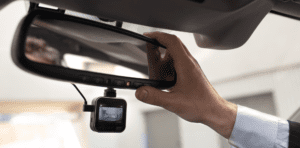Compare cheap car leasing
✔ Compare cheap car leasing quotes
✔ Over 110 car leasing providers
✔ Get a quote in minutes
✔ Save up to £504*
Buying a new car can hit your wallet hard. That’s why car leasing is getting more popular, especially for those who are keen on plug-in cars.
- What is Car Leasing?
- Alternative Car Financing options
- Pros and Cons of Leasing a Car
- Pros and Cons of Buying a Car
- Do I need a good Credit Rating to Lease a Car?
- Where can I Compare Car Insurance Quotes?
- Frequently asked questions
Still, leasing can be a bit confusing for a lot of us. So, when you’re trying to figure out the best option for you, what things should you think about?
What is Car Leasing?
Car leasing, often referred to as Personal Contract Hire (PCH), is akin to entering into a prolonged rental agreement for a vehicle.
Under this arrangement, you’re provided with a brand-new car and, in exchange, you commit to paying the leasing firm regular monthly instalments over a specified period, usually ranging from two to four years.


After the lease term, you typically have a couple of choices, depending on your lease agreement. You can:
- Return the car to the leasing company without further obligations, effectively ending the contract, or
- Upgrade to a new car by initiating a fresh lease agreement, which allows you to continuously drive a current model.
It’s important to note that with PCH, you never own the car; you’re simply renting it for a set period. The monthly payments often cover other costs like road tax, and you may also have the option to include maintenance packages in your agreement, which can cover routine services and sometimes even tyre replacements.
One of the significant benefits of leasing is that it allows you to drive a new car without the large upfront cost of buying outright. However, there are restrictions to consider, such as mileage limits and potential charges for excessive wear and tear. Additionally, you’ll need to maintain comprehensive car insurance throughout the lease.
Leasing can be an attractive option for those who enjoy driving the latest models and prefer predictable monthly expenses without the hassle of disposing of the old car when it’s time to change.
Car leasing | Buying a car outright | |
Upfront payment required | Yes | Yes |
Fixed monthly payment | Yes | No |
No mileage limits | No | Yes |
Road tax and delivery included | Yes | No |
Own the car | No | Yes |
You can modify the car | No | Yes |
You have the option to sell the car | No | Yes |
New car every couple of years | Yes | No |
How much can you save on car leasing?
Alternative Car Financing Options
If paying for a car in full isn’t feasible and the notion of essentially ‘renting’ through a lease doesn’t appeal, there are several other finance methods available:
Hire Purchase (HP)
With HP, you spread the cost of the car over a set period, which could be several months to years. After you’ve made all the payments, including the ‘option to purchase‘ fee which seals the deal, the vehicle becomes yours, and you’re the legal owner.


Personal Contract Purchase (PCP)
PCP is similar to a lease (PCH), but with a twist: at the end of your agreement, you have the choice to make a final lump sum payment—often referred to as a balloon payment—to own the car outright. If you decide not to pay this sum, you can either return the vehicle or use any remaining value in the car to start a new PCP deal.


Personal Loan
Taking out a personal loan can be one of the more cost-effective ways to own a car directly. Financial institutions may offer loans up to £25,000, and sometimes up to £50,000 for their customers. You’d repay a fixed amount monthly over an agreed period, usually between one and five years, and the interest rate could be more favourable compared to other finance options.


0% Purchase Credit Card
For less expensive cars, purchasing with a 0% purchase credit card could be a smart move. You’ll have an interest-free period to pay back the balance—just ensure that you’re able to clear the debt before this promotional period ends, or you could face high-interest rates. It’s crucial to have a high enough credit limit on the card to cover the cost of the car.


It’s vital to weigh up these options carefully, considering the interest rates, potential fees, and the total amount repayable over time. Also, remember that with HP and PCP, until the final payment is made, the lender technically owns the car, which may affect what you can do with it during the term of the agreement.
Always consider the full terms and conditions of the financing method you choose to ensure it aligns with your financial circumstances and car ownership goals.
How much can you save on car leasing?
Pros and Cons of Leasing a Car
Deciding whether to lease a car hinges on your situation and the type of vehicle you’re interested in. Here’s a rundown of the benefits and drawbacks.
Pros of Leasing a Car
Advantageous for High-End Cars: Leasing shines when it comes to premium cars. These cars often depreciate less rapidly, allowing leasing companies to offer more attractive terms. Thus, you could find yourself behind the wheel of a luxury car that might be out of reach financially if you were to purchase it outright.
Regular Upgrades: Leasing makes it easy to drive a new car every few years. Once your lease ends, you can simply start a new contract with the latest model.
Reduced Maintenance Hassles: Driving a newer car generally means fewer breakdowns and mechanical issues, so you’re less likely to face unexpected repair bills. Additionally, many lease agreements include maintenance and servicing, which can offer further peace of mind.
Lower Running Costs: The leasing company typically takes care of the vehicle excise duty (road tax). Some lease agreements also cover other costs, which could save you money over time.
Tax Benefits for Businesses: For companies, lease payments are often tax-deductible, and if you’re VAT-registered, you may reclaim 50% of the VAT on the finance portion of the lease payments, as well as the full VAT on any maintenance packages.


Cons of Leasing a Car
Mileage Restrictions: Leasing agreements usually come with an annual mileage cap. Exceeding this limit can result in additional charges.
Absence of Ownership: At the end of the lease, the car must be returned. You won’t own the car, nor will you benefit from any residual value it may have.
Potential Extra Costs: Handing back a car with more than the ‘fair wear and tear‘ can incur repair charges or fees. It’s crucial to keep the car in good condition to avoid these extra costs.
No Personal Touch: You can’t customise a leased car as you would with one you own. Modifications need express permission from the lease company, and usually, there’s very little you can change.
Penalties for Early Termination: Deciding to exit a lease agreement early can be costly due to early termination fees.


It’s important to consider these factors and to read the terms and conditions of any lease agreement thoroughly to ensure that it fits your needs and financial planning. Remember, the attractiveness of a lease can vary widely depending on factors like the type of car, the lease terms, and your own driving habits.
How much can you save on car leasing?
Pros and Cons of Buying a Car
Deciding to buy a car comes with its own set of advantages and disadvantages that need to be considered.
Pros of Buying a Car
Complete Ownership: One of the most significant advantages is outright ownership. You have the title, and the car is yours for as long as you choose to keep it.
Unlimited Mileage: Drive as much as you like without worrying about exceeding mileage limits, giving you complete freedom on the road. Keep in mind, however, that higher mileage can increase your car’s wear and tear, potentially raising your maintenance costs and affecting its resale value.
Customisation and Extras: You’re at liberty to customise your car with any extras, choose the features you prefer, or make modifications. Remember that any changes can affect your insurance premiums.
Part-Exchange and Resale Value: When it’s time for a new car, you can trade in your old one or sell it privately. The money you get can go towards purchasing your next car.


Cons of Buying a Car
Depreciation: A new car can lose value quickly — often significant in the first few years. This depreciation is the gap between what you pay when you buy the car and what it’s worth when you sell it.
Potentially High Upfront Costs: Buying a car, especially if you pay the full price upfront, can be a substantial financial outlay. Even with a loan, you’ll incur interest charges, increasing the overall cost of the car.
Responsibility for Selling or Trading: When you want to switch to a new car, it’s up to you to handle the sale or trade-in of your old one. This process can be more demanding and time-consuming than simply returning a car to a lease company.


Buying a car also means taking on all the responsibilities of maintenance and repairs once any warranty expires. Additionally, for those who finance the purchase through a loan, there is the obligation of monthly payments, which typically are higher than leasing, and you may be tied to a longer-term financial commitment.
When deciding whether to buy, it’s essential to evaluate the total cost of ownership, including loan interest, insurance, maintenance, and the potential impact of depreciation. It’s also wise to consider how long you plan to keep the car and how much it will cost you over that period, both in terms of actual expenses and potential lost value.
How much can you save on car leasing?
Do I need a good Credit Rating to Lease a Car?
To enter into a leasing contract, a strong credit rating is indeed necessary. The leasing company will perform a credit check as part of the application process to determine your financial reliability. The essence of this is to gauge the risk associated with you potentially failing to keep up with the monthly lease payments.


If you have a credit rating that’s considered average or poor, it’s quite likely that you’ll face difficulties in securing a lease. Leasing companies tend to favour customers with good to excellent credit scores, as these scores suggest a lower risk of default.
Before getting attracted to the appeal of low monthly payments, it’s wise to calculate the total cost of the lease for the entire term. Compare this cost to the estimated depreciation of the car over the same period if you were to purchase and then sell it. The goal here is to ensure the overall leasing costs do not surpass what you’d lose through a car’s depreciation after ownership.
It’s important to factor in that leasing can sometimes include other charges, such as for excess mileage or excessive wear and tear, which can add to the total cost. Therefore, when evaluating whether leasing is a financially prudent option, one should consider these potential extra charges as well.
Moreover, if your credit isn’t where it needs to be, there are steps you can take to improve it. Consistently paying bills on time, reducing outstanding debt, and checking your credit report for errors can all help boost your score. Building a stronger credit rating not only helps with leasing a car but also benefits you in various financial aspects, from securing loans to reducing insurance premiums.
How much can you save on car leasing?
Where can I Compare Car Insurance Quotes?
If you are in the market for car insurance, whether you’re purchasing or leasing a car, compare car insurance quotes with our efficient and straightforward platform.
By using our service, you’re able to access over 110 insurance quotes from different providers in one location, allowing for easy comparison and secure the best deal.
How much can you save on car leasing?
Frequently asked questions
The decision to lease a car during a period of increased living costs is a personal one and should be approached with careful consideration of your financial resilience. The key consideration is whether you can reliably manage the ongoing lease payments without financial strain.
To make an informed decision, it’s important to crunch the numbers. This involves comparing the monthly costs of leasing with those of taking out a car loan. Remember to include interest rates and any associated fees in your calculations to get a true sense of long-term affordability.
Given that leased cars are typically new, you may also want to explore the market for used cars. A pre-owned car, only a few years old, may present a more cost-effective alternative, especially when taking into account the depreciation that new cars face after leaving the showroom.
Assessing your options should also factor in the potential benefits of leasing, such as inclusive servicing and maintenance, against the possible extra charges, like mileage overages or end-of-lease damage penalties.
Leasing a car during a cost-of-living crisis necessitates a balanced approach, considering your current financial commitments against the convenience and expense of leasing.
Be sure to maintain a safety net within your budget for unexpected costs and thoroughly evaluate the financial implications before proceeding with a lease.
The escalating costs of car leasing in the UK can be attributed to a multitude of global and economic factors. The automotive industry has been grappling with a shortage of essential components, notably semiconductor chips, which has impacted production lines worldwide.
This shortage is compounded by rising prices for energy, raw materials, parts, and labour. Such increases are inevitably passed down the supply chain, culminating in higher expenses for consumers.
In addition, the financial landscape has been affected by hikes in interest rates, which influence the cost of borrowing. Lenders, facing their own increased costs, pass these on to consumers in the form of higher lease prices.
The culmination of these circumstances means that leasing, which once might have been seen as a more budget-friendly alternative to buying a car outright, has become considerably less economical in recent times.
The size of the deposit required for a car lease can vary from one leasing company to another. Generally, you may be expected to pay an initial sum that is akin to six months’ worth of lease payments upfront.
It’s worth noting that offering a larger deposit can often reduce your ongoing monthly payments. The more you pay upfront, the less you would typically need to pay each month throughout the lease term.
When it comes to leasing a car, the option to part-exchange your existing car is not available. Leasing arrangements do not accommodate the trade-in of an old car as part of the agreement.
Should you wish to drive your leased vehicle outside of the UK, it’s imperative to secure a VE103 vehicle on-hire certificate.
This document is issued by your leasing company and serves as proof that you have the authority to take the leased car into countries within the European Union.










